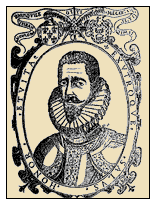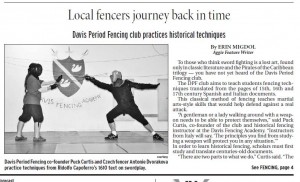Pacheco’s Destreza Curriculum
(12/16/2009)
With the Ettenhard translation rolling out we have been getting some requests on what material a fencing instructor should teach during a Destreza class. Rather than provide my own answer, it might be useful to look back to the living tradition. In 1625 don Luis Pacheco de Narváez wrote a document that provides us with this information. It was considered important enough that it was later republished in 1658:
Modo facil y nvevo para examinarse los Maestros en la Destreza de las Armas (Easy and New Way to Examine the Maestros in the Art of Weapons)
folios 81v-85v
The book is written as a conversation with a Maestro testing a student’s knowledge. Presented here for the first time in English is Mary’s translation of Pacheco’s recommended curriculum:
Pacheco’s Curriculum
- Teach the theory before the practice
- Theory
- Explain “the simple movements and the mixed ones that can be done with the arm and those that can be done with the swords” (f. 82r). (See Article.)
- Tell him about “the six general lines, the simple ones and the mixed, in which it is possible for the opponent to assume his stance, and show him how the line of the right angle has the greatest reach and defense” (f. 82r). (See Article.)
- Explain “the vertical, collateral and diagonal lines envisioned on the body, and how the strikes should be executed along them” (f. 82r).
- Next, the footwork—”simple and compound steps, to which foot each belongs and which are common to both feet” (f. 82r-v). (See Article.)
- “Afterward, [explain] the circle that is imagined between the two combatants with the transversal and infinite lines envisioned in it along which the steps are made” (f. 82v). (See Article.)
- “Give the student very detailed information about the angles that are created by the contact of the swords, and how (whether to place atajo or to do what is called the gaining) it is necessary that there are four and either all of them are right angles or two are obtuse angles and two acute. The right angles (the swords touching in the middle of their lengths) only serve for the defense and offense” (f. 82v). (See Article.)
- “Tell him how there are only two ways to do the techniques, the one with the positioning of the sword and the other gaining the degrees of profile” (f. 82v-83r).
- Tell him “that in the art of defense there are only five techniques—the Circular cut and reverse, the thrust, and the half cut and reverse—and explain to him the movements that compose each one whether the sword is free or subjected” (f. 83r).
- “Prove to him also that there are not detaining parries, that the deflections are harmful, and that the subjection is what one should do instead of them” (f. 83r).
- Practice
- “Teach him how to hold the sword in the hand and how it is advisable to hold it tightly in the hand so that the strength of the body can be communicated to the sword by means of the arm…and the movements can be strong and fast” (f. 83r-v). (See Article.)
- Explain “that one always assumes one’s stance in the right angle, the arm straight, without the arm nor the hand participating in any of the four extremes—low, high, to one side or the other” (f. 83v). (See Article.)
- Explain “that he should have the body profiled, equally over both feet, and the feet with one heel in front of the other and not further apart than half a foot in such a way that if the tip of the left was turned it would arrive at the heel of the right” (f. 83v).
- “Teach him the four general techniques” (f. 83v).
- Show him “the opposition that the some techniques make to the others and the particular techniques over which each one has control” (f. 83v).
- “And finally [explain] all the materials that have been dealt with here” (f. 83v-84r).
Links
I have linked some of the previous Destreza articles from the blog relevant to each of Pacheco’s points.
Ettenhard and More
Reading through Ettenhard’s work you will see that he follows this curriculum very closely. Pacheco has more to say and you can expect to see his advice here once we have it in English.
~P.



